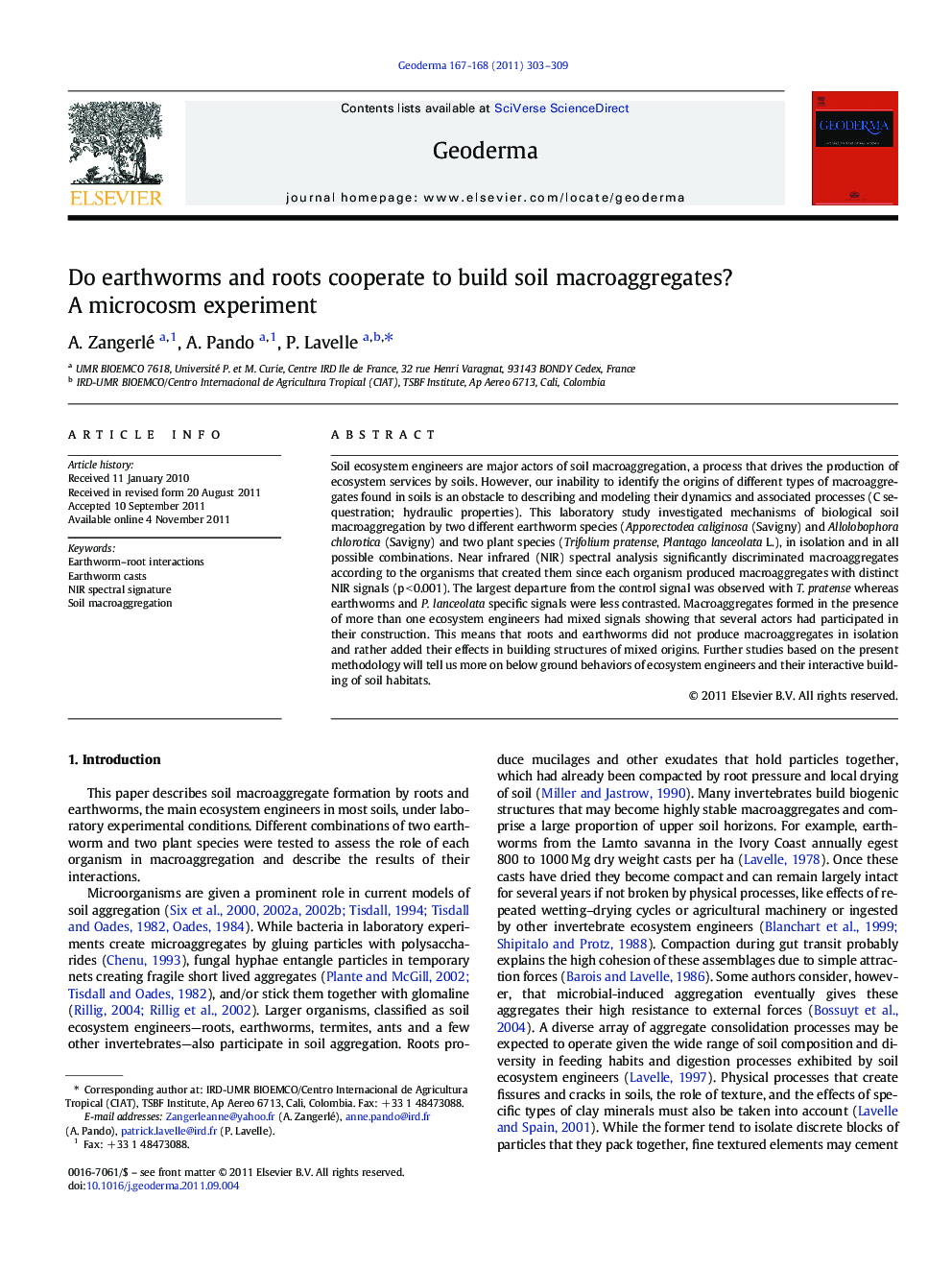| Article ID | Journal | Published Year | Pages | File Type |
|---|---|---|---|---|
| 4574041 | Geoderma | 2011 | 7 Pages |
Soil ecosystem engineers are major actors of soil macroaggregation, a process that drives the production of ecosystem services by soils. However, our inability to identify the origins of different types of macroaggregates found in soils is an obstacle to describing and modeling their dynamics and associated processes (C sequestration; hydraulic properties). This laboratory study investigated mechanisms of biological soil macroaggregation by two different earthworm species (Apporectodea caliginosa (Savigny) and Allolobophora chlorotica (Savigny) and two plant species (Trifolium pratense, Plantago lanceolata L.), in isolation and in all possible combinations. Near infrared (NIR) spectral analysis significantly discriminated macroaggregates according to the organisms that created them since each organism produced macroaggregates with distinct NIR signals (p < 0.001). The largest departure from the control signal was observed with T. pratense whereas earthworms and P. lanceolata specific signals were less contrasted. Macroaggregates formed in the presence of more than one ecosystem engineers had mixed signals showing that several actors had participated in their construction. This means that roots and earthworms did not produce macroaggregates in isolation and rather added their effects in building structures of mixed origins. Further studies based on the present methodology will tell us more on below ground behaviors of ecosystem engineers and their interactive building of soil habitats.
► NIRS analysis of macroaggregates allows to identify the organisms that created them. ► Plant roots and earthworms interact in macroaggregate building. ► P. lanceolata and T. pratense produced root aggregates in common. ► Ingestion rates of A. caliginosa and A. chlorotica decreased when they were associated in treatments.
